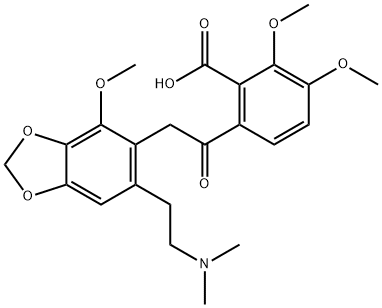Description
An alkaloid of opium (Papaver somniferum) was first isolated by Pelletier in
1832 but not characterized until some years later by Couerbe and Anderson, the
latter assigning to it the formula C23H2909N which was accepted until Freund
showed that it contains H20 of crystallization. The base remains in the mother
liquors after removal of the major alkaloids. It forms slender, colourless needles
or prisms of the trihydrate, m.p. 170°C. It is optically inactive and dissolves
readily in alkalies forming metallic derivatives. It behaves as a weak, monoacidic
base forming well-crystallized salts. The hydrochloride crystallizes with 5.5 H20
from cold, dilute HCI, or as the trihydrate from hot solutions. From MeOH it
yields crystals with 1 mole of solvent, m.p. 190-2°C. The aurichloride forms
reddish-yellow needles, m.p. 130°C and the picrate has m.p. 195°C. With chlorine
water, followed by the addition of ammonia, it gives a characteristic blood-red
colour while with dilute iodine solution, the solid alkaloid develops a blue
colour. With ethyl nitrite, narceine forms an oximino derivative which, on
exhaustive methylation, furnishes trimethylamine, hemipinic acid and 2-cyano-3-
methoxy-4: s-methylenedioxy-1-vinylbenzene.
Definition
ChEBI: Narceine is a stilbenoid.
Purification Methods
Recrystallise Narcein from water (as trihydrate). The styphnate has m 185-189o (from EtOH), and the picrate has m 200o (from EtOH). [Beilstein 19 H 370, 19 I 797, 19 II 386, 19 IV 4382.]
References
Couerbe., Annalen, 17,171 (1836)
Anderson., ibid, 86, 182 (1853)
Roser., ibid, 247, 167 (1888)
Freund, Frankforter., ibid, 277,20 (1893)
Freund, Oppenheimer., Ber., 42, 1084 (1909)
